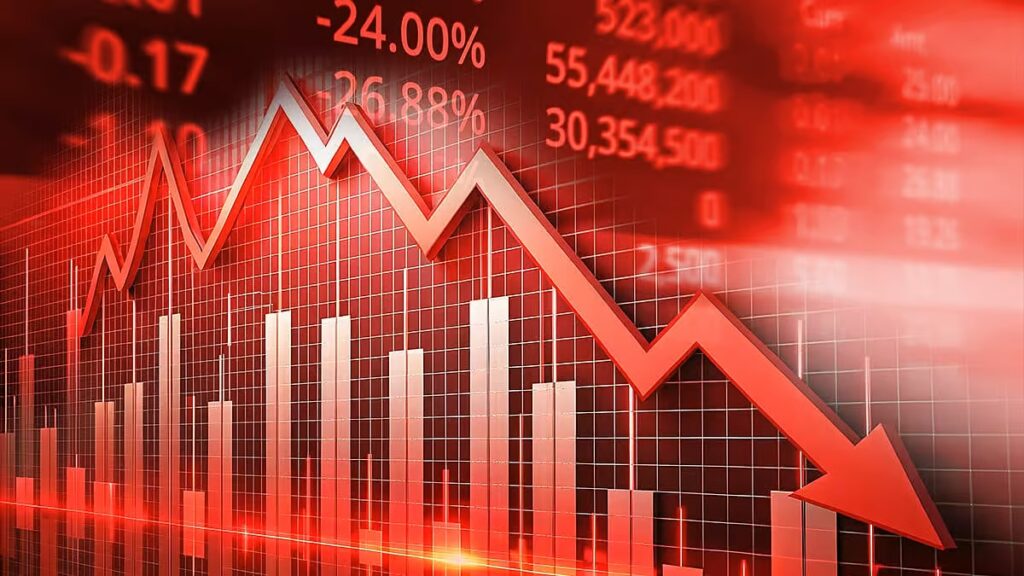Indian stock market fell sharply as global worries grew due to U.S. trade wars under Trump, hurting investor confidence.

On Monday, April 7, 2025, the Indian stock market witnessed a dramatic collapse, reflecting heightened global economic tensions. Triggered by escalating trade wars led by the United States under President Donald Trump, markets around the world including India faced heavy losses. These are the key factors contributing to the crash and the broader implications for India’s financial outlook.
Key Market Highlights
- Sensex: Crashed nearly 4,000 points.
- Nifty 50: Dropped below 21,750.
- BSE Midcap & Smallcap: Fell as much as 10%.
- India VIX (Volatility Index): Jumped 52%, reaching a value of 21, indicating extreme investor fear.
- Crude Oil: Brent crude fell 2.74% to $63.78 per barrel.
- Investor Wealth Erosion: Market capitalization of BSE-listed firms fell by ₹19 lakh crore, from ₹403 lakh crore to ₹384 lakh crore.
Key Factors Behind the Crash
1. Global Selloff
- Panic selling gripped global markets amid trade war fears.
- Major Asian and Western indices saw sharp declines:
- Taiwan Weighted: -10%
- Nikkei (Japan): -7%
- S&P 500: -5.97%
- Dow Jones: -5.50%
- Nasdaq: -5.73%
2. China’s Retaliation
- After the US imposed a 54% tariff on Chinese goods, Beijing responded:
- 34% tariff on US imports.
- Export restrictions on rare earths.
- Anti-dumping probe into CT X-ray tubes from the US and India.
- Export controls on 16 US firms.
- Indian sectors hit hard:
- Auto, IT, Metals, Pharma, Energy Infra: Down ~7% on average.
3. Tariff Impact Still Not Priced In
- Markets remain uneasy as the Trump administration tightens its stance.
- India, though not the main target, is not insulated.
- Goldman Sachs: India’s FY25 growth cut to 6.1% (from 6.3%).
- Citi: Sees 40 bps hit to India’s GDP growth.
4. Fears of Global Slowdown
- Tariffs → Rising inflation, profit pressure, weak consumer sentiment.
- JP Morgan: Odds of a global recession increased to 60%.
- Potential for a deep recession if trade hostilities continue.
5. Foreign Portfolio Investor (FPI) Outflows
- FPIs resumed selling in April after March’s brief buying spree.
- Outflows: ₹13,730 crore from Indian equities in just a few trading sessions.
- Uncertainty over India-US trade relations exacerbating foreign investor flight.
6. RBI Monetary Policy & Rate Cut Expectations
- RBI’s MPC decision due April 9: Anticipation of a rate cut or stimulus to cushion economic shock.
- Additional concern over potential new US tariffs, especially on pharma exports, adding to market anxiety.
Conclusion
The Indian stock market’s crash is part of a broader global economic upheaval triggered by an aggressive trade war policy from the US. While India may not be directly targeted in many tariffs, the interconnectedness of global trade means the country cannot remain untouched. Market participants are now closely watching for:
- The outcome of RBI’s policy meeting.
- Future US-China trade developments.
- Clarity on India’s negotiations with the US.
![]()





